It takes serious superhuman willpower to avoid caving during Girl Scout Cookie season. You’ve seen them on the local news. You’re very much aware that it’s that time of the year.
And although you have mentally prepared yourself to just say, “No”, you get lost in the moment as soon as you hear that high-pitched voice asking, “Do you want to buy some cookies?”
Immediately your self control flies out the window and all you can think of is why buying one box – just one – is a great idea:
1. It’s for a good cause.
2. It’s a seasonal item only available eight weeks each year!
3. Those little girls are damn good sales people.
So naturally, it seems like a brilliant idea – especially when you’re leaving the grocery store exhausted and starving after a long day at work and those cute little faces easily twist your arm. Strategy.
Everything is fun and games until you accidentally read the side of one of those bright-colored boxes. Take one second to scan the ingredient label, and you will soon realize that it’s not just an innocent coconut-caramel-chocolate delight.
In reality, it’s a potent combination of sugar, chemicals and strategically hidden trans fat.
Sure, one cookie won’t kill you. But it’s definitely not going to help you. Three Samoas cookies pack 15 grams of sugar, which happens to be the first ingredient. With little to no nutritional benefit, processed sugar is arguably your worst enemy.
It increases your body’s insulin resistance, the prevalence of childhood obesity and the risk for heart disease and type 2 diabetes, to name a few. More evidence is pointing to sugar consumption as one of the main culprits of adverse health conditions.
But let’s not focus on the negative. Life is meant to be enjoyed (delicious food and chocolate included). So we set out to transform that mouth-watering chocolatey-coconut goodness into a nutrient-dense, protein-packed smoothie bowl that will be sure to curb those sweet-tooth cravings with our Samoa Smoothie Bowl.
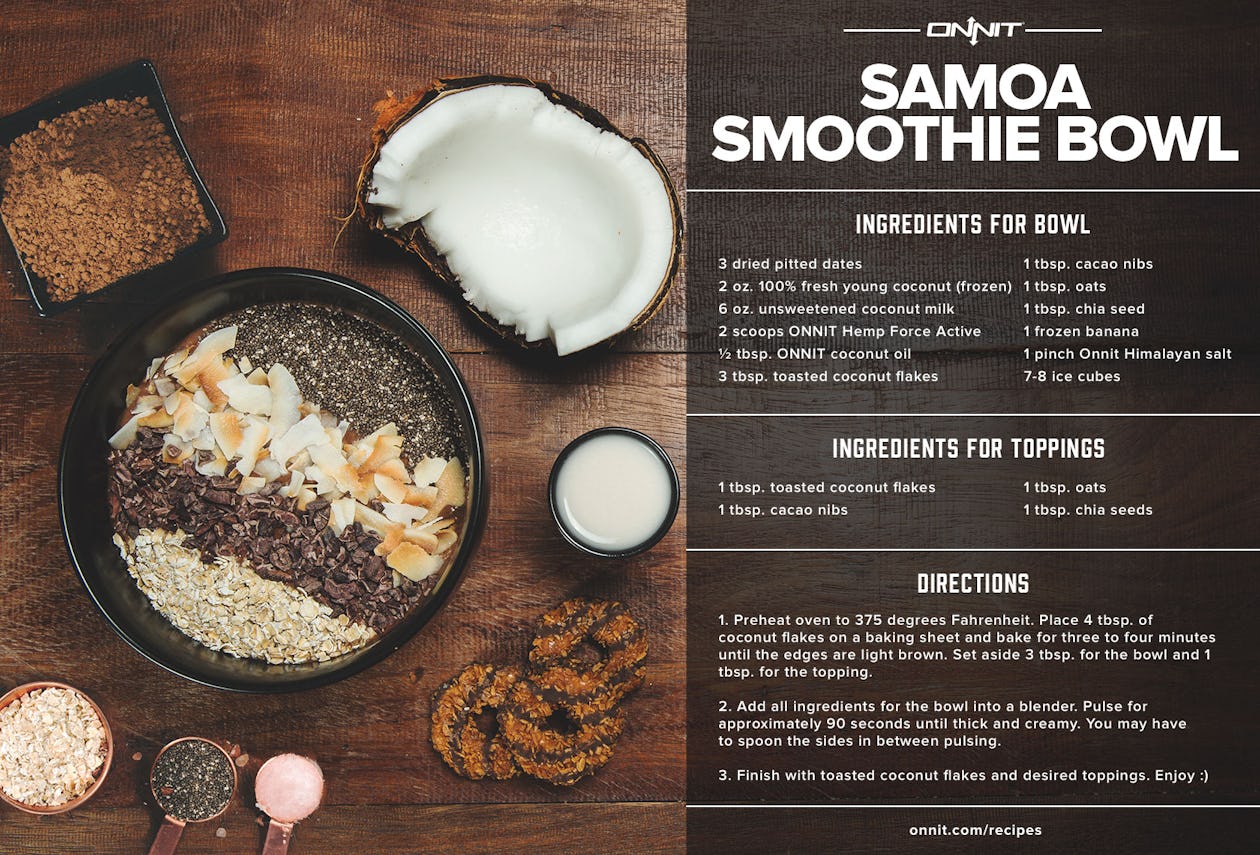
The Samoa Smoothie Bowl is packed full of a variety of superfoods, so before we get into the recipe let’s look at a few of the ingredients that pack a powerful punch.
Hemp Protein
Hemp is often a staple in the vegan diet because it’s one of the few plant sources of a complete protein; it contains all nine essential amino acids – the building blocks of protein – that the body cannot produce on its own.
Naturally gluten free and lactose free, hemp protein is one of the best supplement choices for strict diets.
It also does not contain any oligosaccharide or trypsin inhibitors, both of which can affect ease of digestion. It’s safe to say, hemp protein will have you waving goodbye to belly bloat and other gnarly smelly odors post-consumption.
Plus, the water-insoluble fiber content promotes healthy and regular bowel movements. So, it’s a win-win.
Although it’s not as protein dense as alternatives like soy and whey, hemp is more readily digested and absorbed by the body because it is predominantly composed of globulin edestrin, which is similar to one that is found in human blood.
Need more convincing? An alkaline-forming food, hemp promotes a balanced pH, it’s grown naturally and sustainably without the need of pesticides or herbicides and it’s an excellent source of omega-3 and -6 fatty acids, vitamins, minerals and antioxidants.
Chia Seeds
A 90’s infomercial turned nutrient powerhouse, the chia seed has come a long way since growing plant afros on clay animal figurines. It has been dubbed a “superfood,” weight loss supplement and beneficial treatment for gastrointestinal disorders.
Despite its recent popularity in the media, chia seeds have been prized for thousands of years dating back to the Mayan and Aztec empires. “Chia” is the Mayan word for strength. And it’s clear why. The health benefits are innumerable.
This high-fiber food slows down digestion allowing your body to absorb more nutrients and helps maintain balanced blood sugar levels, which is particularly beneficial for people with type 2 diabetes. Containing more omega-3 than salmon, sardines and flaxseed, chia has been shown to decrease low-density lipoprotein (LDL a.k.a. the bad) cholesterol levels, blood pressure and improve metabolic functions.
One of the most unique attributes of this tiny black seed is its ability to form a gelatinous substance called hydrophilic colloid when it comes in contact with liquid, which helps maintain the integrity and health of the gastrointestinal (GI) tract.
Chia seeds can absorb more than 12 times their weight in water. This helps keep your cells hydrated, maintain electrolyte balance and makes you feel full by literally expanding in your stomach. However, take note: do not consume too much in one sitting.
The ensuing stomach ache is not worth it, peeps. Just take my word for it.
Cacao
Commonly confused with cocoa, cacao is the less-processed version with a slightly different spelling.
Cacao, in its unprocessed state, contains more than 300 phytochemicals, and has some incredible health benefits. Most notably, it is one of the richest dietary sources of phenolic antioxidants and magnesium.
Research has shown that cacao can reduce the risk of diabetes by increasing insulin resistance, protect nerves from injury and inflammation, protect the skin from oxidative damage from UV radiation and has shown positive effects on satiety, cognitive function and mood.
Chill, bro. Before you go reaching for that Snicker’s bar, it’s important to know most processed chocolate candy bars contain only 10 percent or less cacao because of the added sugar, milk solids and additives.
The amount and integrity of the phytochemicals greatly decrease during manufacturing, exposure to oxygen and alkalinization. At the mainstream candy bar level, the health risks, like weight gain and blood sugar spikes, outweigh the intrinsic benefits of cacao.
Our advice: Reach for chocolate that is at least 65% cacao or higher when those cravings kick in. Or better yet, throw 100% cacao powder or nibs and add fruit or a natural sweetener like stevia in your next sweet treat to turn down the bitterness and reap the most nutritional benefits.
Coconut
Coconut is one of the most versatile fruits with incredible nutritional benefits. Anything that you can use for cooking, eating and beautifying is OK in my book.
Walk through the the supermarket and you’ll see coconut derivatives everywhere: coconut oil, coconut sugar, coconut butter, coconut milk, coconut flour, coconut water, coconut creamer, coconut-based shampoo; the list goes on.
Coconut water is a great option for a natural, dye-free sports drink as it contains more minerals and electrolytes than mainstream brands. Just one cup of coconut water delivers 10 percent of your daily recommendation for potassium.
For optimal post-workout hydration, add Himalayan salt to your not-from-concentrate coconut water.
Research has shown that sodium-enriched fresh young coconut water is as effective as commercial sports drinks for rehydration post-exercise with reportings of less upset stomach and greater quantity consumed.
Best part: There’s no extreme sugar spike and subsequent crash. Coconut milk and creamer are also great alternatives for coffee, smoothies and protein shakes for those who are lactose intolerant, vegan or Paleo.
In terms of food, coconut flakes, meat, butter, oil and flour are all fantastic for adding flavor, fiber and texture to meals and snacks.
Naturally gluten free, coconut-food derivatives offer nutrient-rich thickening agents and can withstand medium-heat temperatures.
The oil in coconuts contains Medium-Chain Triglycerides (MCTs), which are utilized by the body for quick energy production, are rapidly metabolized and help stabilize blood sugar levels.
We recommend using an unrefined, cold-pressed coconut oil for cooking. Lather a little in your hair and skin while you’re at it and supplement with MCT oil in your next protein shake for improved cognitive function.
Despite the favorable research, this subtly sweet fruit has caused its fair share of debate among health experts.
Sure, it’s a naturally high-fat food with 87-percent saturated fat, but coconut consumption has been shown to increase high-density lipoprotein (HDL a.k.a. the good) cholesterol levels, which is ideal.
Some experts have cautioned people with hypertension and cardiovascular issues to limit coconut intake, but other that, definitely go for it. Your hair, skin, body and brain will thank you for it.
Himalayan Salt
Naturally acquired pink Himalayan salt is packed with 84 essential trace minerals and electrolytes and plays a valuable role in the regulation of multiple bodily processes.
Himalayan salt is made of the same components as table salt, but since the crystal structure is larger than refined salt, it has LESS sodium per 1/4 t. serving.
Pink Himalayan Salt does not have that harsh, stinging bite which allows you to utilize it much more effectively as both a spice and to supplement food.
There is perhaps no simpler way to get the 84 trace minerals valuable to the body that mother nature has produced than to include real pink himalayan salt in your diet.
Recipe
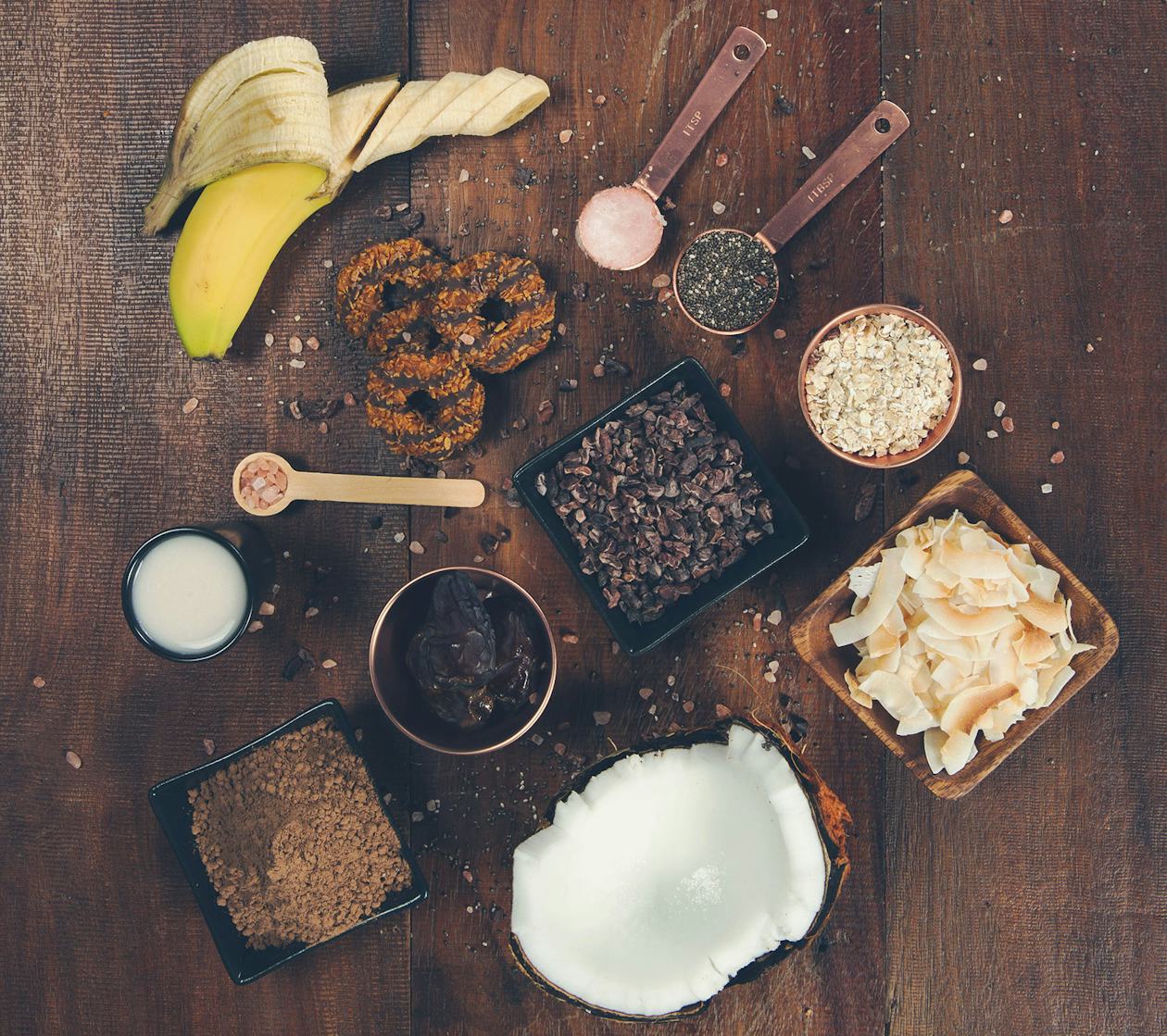
● Yields: 1 bowl
● Cook time: 5 minutes
Ingredients for Bowl
● 3 dried pitted dates
● 1 packet (2 oz.) 100% fresh young coconut (frozen)
● 6 oz. unsweetened coconut milk*
● 2 scoops (26g) ONNIT PowerFOOD Active
● ½ tbsp. ONNIT coconut oil
● 3 tbsp. toasted coconut flakes
● 1 tbsp. cacao nibs
● 1 tbsp. oats
● 1 tbsp. chia seeds
● 1 frozen banana
● 1 pinch of ONNIT Himalayan salt
● 7-8 ice cubes
Ingredients for Toppings
● 1 tbsp. toasted coconut
● 1 tbsp. cacao nibs
● 1 tbsp. oats
● 1 tbsp. chia seeds
*any unsweetened non-dairy milk works fine.
Directions
1. Preheat oven to 375 degrees Fahrenheit. Place 4 tbsp. of coconut flakes on a baking sheet and bake for three to four minutes until the edges are light brown. Set aside 3 tbsp. for the bowl and 1 tbsp. for the topping.
2. Add all ingredients for the bowl into a blender. Pulse for approximately 90 seconds until thick and creamy. You may have to spoon the sides in between pulsing.
3. Finish with toasted coconut flakes and desired toppings. Enjoy 🙂
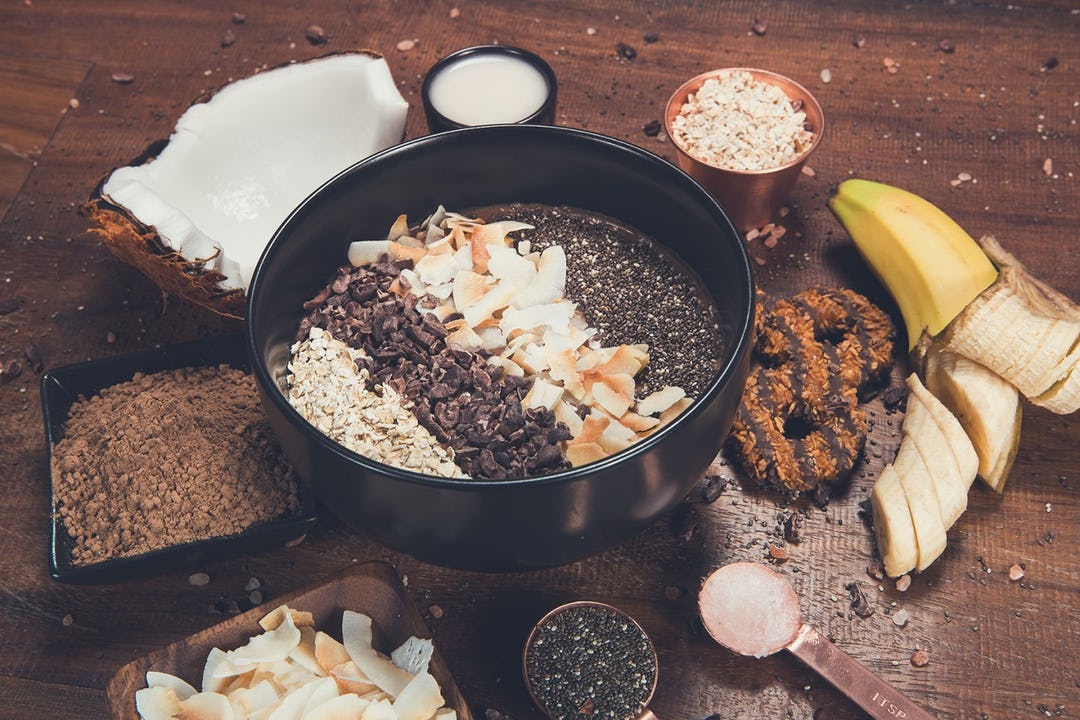
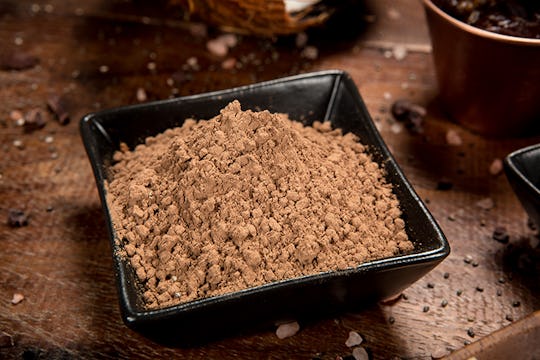

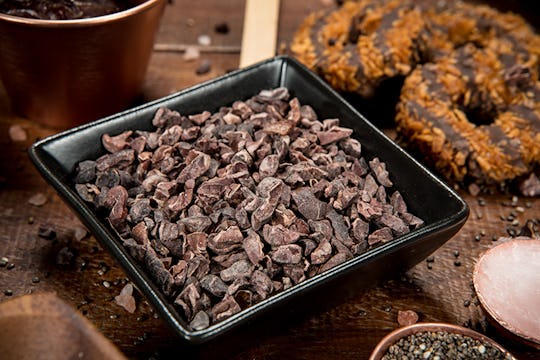
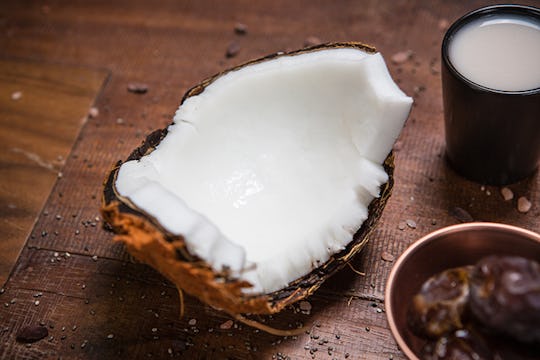
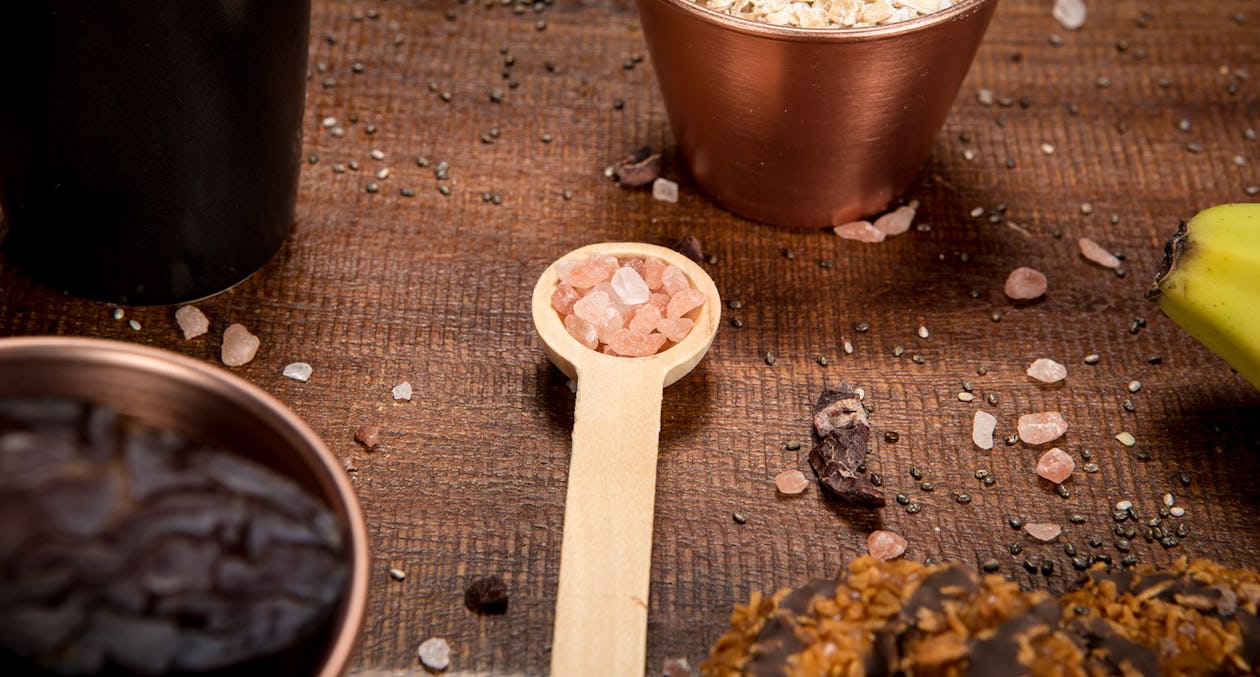
)





